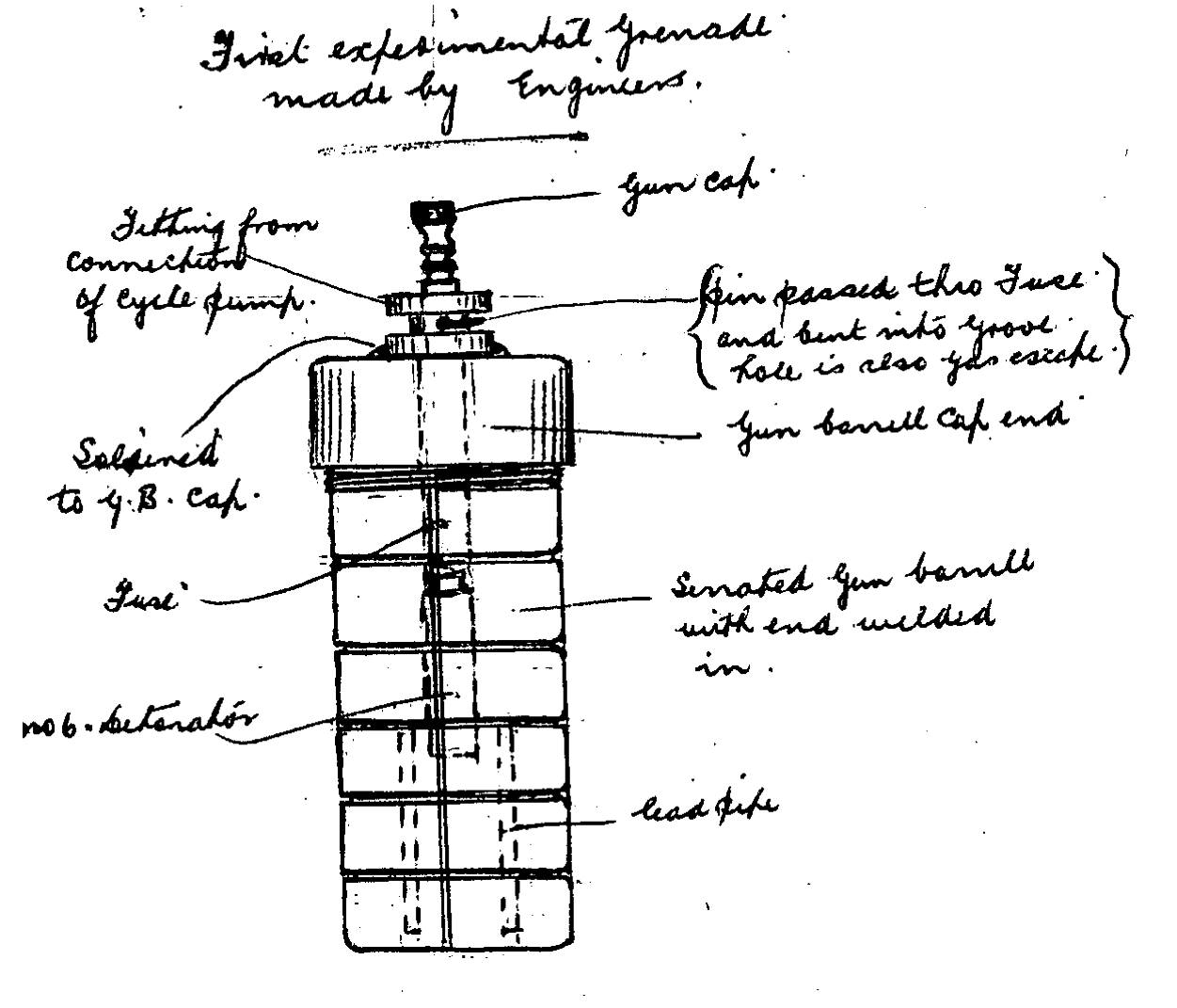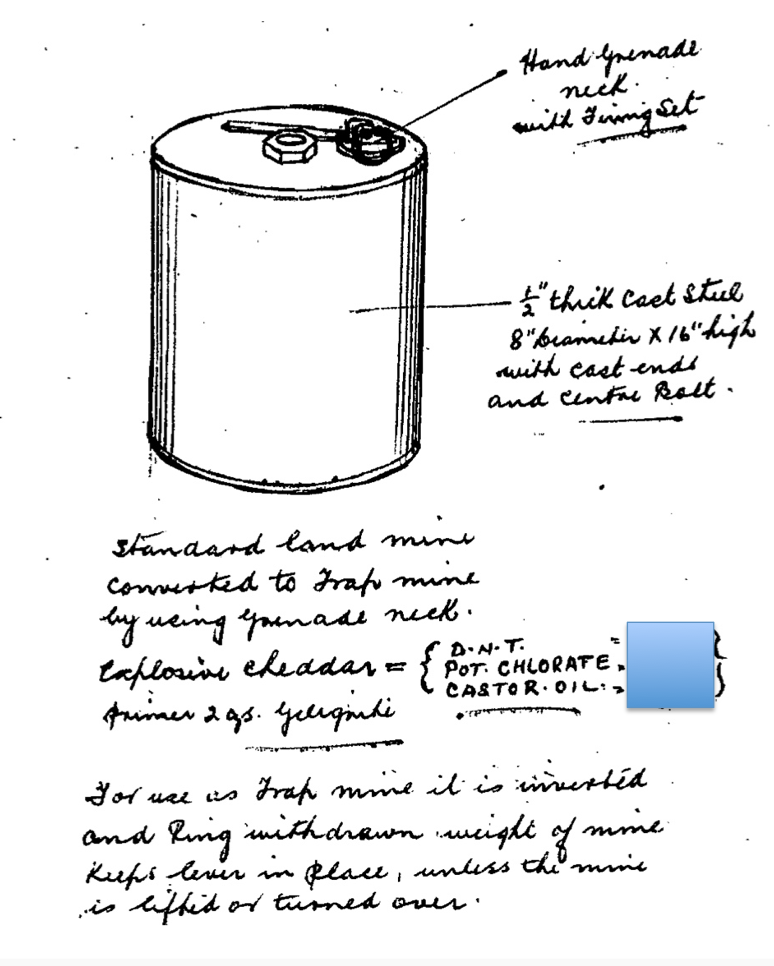I’ve been doing more research on the IEDs used by the Irish “volunteers” between 1919 and 1922 and found some interesting aspects. One should remember the time-line of Irish Republicanism that these events of 1919-1922 sit on – Irish revolutionaries were using explosive devices much earlier, certainly as early as 1803, IEDs were used extensively by the Fenians in the latter half of the 19th century, again in 1939 and of course from 1970 onwards. The window of 1919-122 is just one point on the time line, but is worthy of study for all that.
Firstly, explosives, and I apologise for being somewhat circumspect in the detail here – no need to give modern day revolutionaries with other causes the full recipes. EOD folk can approach me directly of course and I’ll point you in the right direction if I know you. At the beginning of the campaign the explosives used was gelignite stolen from quarries, along with “No 6” detonators. This supply began to become more difficult to obtain and so the Irish volunteers identified chemists and pharmacists and those with military experience from WW1 to develop home made explosives (HME). There were three types, each given a nickname. I won’t describe their manufacturing process:
“Warflour”: Warflour was a nitrated resin, using the ingredients of resin, flour, acid and potassium chlorate.
“Irish Cheddar”: This was the nickname for a form of cheddite, an explosive used quite extensively in the early 20th century, its ingredients being potassium chlorate, nitrobenzene and castor oil. Some sources suggest that “Cheddar” included home made DNT. As an aside, this HME was used extensively by the Polish underground in WW2 in their IEDs, which I’ll write about in a future blog post.
“Paxo”. This was a mix of potassium chlorate and paraffin wax. It was the favoured HME in the 1939 campaign but was developed during this period.
The IRA also developed its own detonators at the time, and I won’t describe them here other than to say that interestingly they were non-metallic and quite an effective design.
In terms of IEDs, and further to my earlier post, the IRA of the time made several thousand grenades, mostly under the Dublin Bicycle shop at 198 Parnell St and latterly at other facilities. It appears that the design of these were copied from the German “Egg” grenade of WW1. These were essentially quite a simple design,small and preferred because they were easier to conceal than a larger grenade. They used the standard sort of fuze with a spring-loaded fly-off lever. Occasionally larger improvised grenades were used – this is a diagram of one of them, made by an IRA engineer involved in their manufacture.

IEDs used for roadside ambushes were usually cylindrical pipes, either drain pipes or preferably the cylinders from a cart axle, filled with gelignite or HME and electrically initiated. The IRA of the time were ambushing British troops on the roads and certainly learned the trick of laying multiple roadside IEDs at the same spacing as convoy vehicles. I can find little record of timed IEDs of the time, but the later 1939 “S-Plan” campaign in Great Britain concentrated on the use of timed IEDs. The cylinders were closed by two end plates – initially with a bolt running down the central axis, and later by a bolt that fitted to the outside of the cylinder. Command wire initiated devices of this type were occasionally adapted to be come booby traps by the use of a grenade striker system. The diagram below, drawn by an IRA man shows one such IED.

Further research into the improvised IRA mortar described in my earlier post has thrown up more interesting facts. The background to the IRA requirement was that their roadside campaign was increasingly forcing the police and military to confine themselves to barracks (today we might call them “FOBs”), and the IRA leadership felt they needed a means to attack these barracks directly. A number of IRA members had fought in the British Army in WW1 and had experienced trench mortars, either as a user or recipient. The IRA funded a secret delegation to visit Germany and buy arms on the black market , including a German trench mortar but this mission was unsuccessful. As a fall-back they asked their engineers to develop a home made mortar based on the British “Stokes” trench mortar. I’m not sure how closely they followed the design, but the IRA version appears to have been of same calibre as the Mk 1 Stokes mortar (3 inch) and projected an 11lb mortar bomb, again the same as a Mk 1 Stokes mortar. It appears that the IRA was able to obtain British Army manual for the Stokes mortar. the tube was made by Matt Furlong’s brother, Joe, at a railway workshop, and Matt (who later died testing a version of the mortar) made the bombs for it at 198 Parnell St.
Additional research leads me to believe that the additional safety feature in the mortar fuze that Matt Furlong removed before his accident was remarkably similar to a fuze safety feature I saw in 1990 or 1991 – on another IRA mortar. That’s seventy years apart, and essentially the same safety feature being used on an improvised mortar.

Hi,
I was hoping you might be able to tell me more about the sources of your information regarding the manufacture of those particularly Irish explosives used during the Anglo-Irish war and Civil War?
Christopher – The sources are online. Just on a point of principle I don't want to point the wrong sort of people towards places where they can find instructions on making explosives. I don't know who you are and you could either be a well intentioned historian, an EOD operator or a modern day militant nut-job terrorist. (Respectfully!)
I’m writing about the Irish period 1919 to 1922 particularly the siege on the Four Courts in Dublin 28th to 30th June 1922. I have numerous references to “Irish Chedar” or usually just “Chedar” . I did read something about the manufacture of it a couple of years ago which as I remember turned up some historical connection to a name I’ve now forgotten. Can you point me in the right direction.? I need to know about how it was stored, effects of a large amount in a confined space, did it smell ? how difficult was it to get to explode, could it be detonated by a fire flame alone ? etc.
Author
There are references to “Cheddar” in a variety of sources but if you look for “Cheddite” from which the nickname of cheddar was drawn you’ll find that it was an explosive developed in the late 19th century in France. Like many improvised explosives it’s mix of an oxidiser (in this case a chlorate) and a fuel – paraffin and nitrobenzene. I’m cautious about discussing manufacturing and storage and the relative properties and benefits or otherwise of explosive mixes, for obvious reasons, so I’ll leave it at that. Sorry but I’m not going into that sort of detail. You’ll have to look elsewhere.